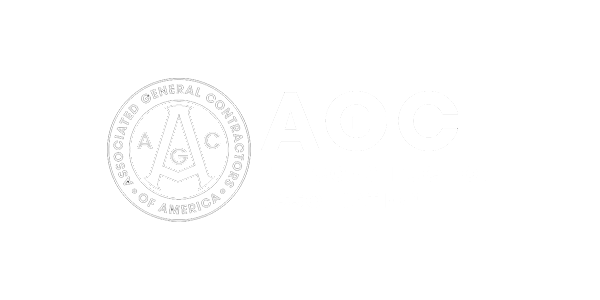Which Construction Billing Method Should You Use?
From the outside, construction billing seems as simple as sending and receiving payments. But the truth is that billing is complex. After all, construction billing needs to translate every dollar into real progress and on-the-ground results.
Along with ensuring streamlined payments, general construction contractors must choose between multiple methods of billing. Each billing method offers unique advantages and challenges, directly impacting project workflow and bottom-line results. We explore these methods below, helping you choose the most effective billing strategy for your construction projects. But first, let’s unpack how construction billing impacts your business.
What Is Construction Billing?
For a quick recap, construction billing is how general contractors and subcontractors handle invoicing and payments throughout a construction project. Having the right billing strategy in place is crucial as it keeps the cash flowing, ensuring that everyone gets paid for their work on time.
There are many construction billing methods. Each billing method corresponds to different project requirements.
Should you use different construction billing methods in the same project?
Absolutely. For complex projects, you might find that one method suits the initial phase while another works better as the job progresses. This flexibility can make it easier to handle cash flow while also helping general contractors meet the payment expectations of suppliers and subcontractors.
Table of Contents
The Different Types of Construction Billing Methods
Construction billing methods are integral to setting up effective payment schedules that align with the progress and timelines of a project.
1. Lump Sum or Fixed Price Billing
Lump sum contracts pay out a fixed total fee that covers the entire scope of a project. Under these terms, general contractors that manage resources effectively and complete the project as efficiently as possible earn higher profits. This is because any cost savings are added to their income. This approach makes budgeting more predictable and reduces administrative overhead, as changes in cost do not affect the payment amount.
2. Cost-Plus Billing
With this contract, general contractors get paid for all the costs they incur plus an extra fee that serves as their profit. This structure guarantees that general contractor costs are covered and their profit margin is maintained, even when incurring unforeseen costs. Cost-plus payments are usually made monthly, after invoices or payment requests are submitted, or according to a schedule defined in the contract.
3. Time and Material Billing
This construction billing method charges based on the actual time spent on a project and the materials used. It provides adaptability for projects where the scope is not clearly defined from the start. Time and material contracts usually allow for billing as work is completed, or on a regular schedule, such as bi-weekly or monthly, ensuring contractors are compensated promptly for their expenses and efforts.
4. Unit Price Billing
Under this contract, payments are made based on a fixed rate for each unit of work completed, such as paving a road or installing piping. This type of contract is valuable for projects involving repetitive tasks or bulk materials. Unit price contracts enable straightforward billing for variable quantities of work, with construction payments being scheduled based on the units completed during a certain period.
5. Milestone Billing
Milestone billing breaks construction project payments into segments tied to the completion of specific milestones. This method ensures that payments are made only after predefined parts of the work are completed, aligning cash flow with project progress. Milestone billing is beneficial for longer projects, providing motivation and financial stability by securing funds at critical stages.
6. Progress Billing
Progress billing involves periodic invoicing based on the completed stages of the project. This method is particularly valuable for large-scale construction projects that extend over a long period. Payments are typically aligned with the percentage of project completion, allowing for steady cash flow throughout the project duration. Progress bills are usually submitted monthly or at set project progress points.
Progress billing is different from milestone billing as it tracks progress by percentage. Milestone billing, on the other hand, favors dividing projects into distinct phases.
7. Retainage Billing
Retainage, also called retention, involves withholding a specific percentage of each payment until the completion of the project. Retainage is employed in construction projects of all sizes and provides a financial incentive for subcontractors to complete projects to your satisfaction. Retainage is typically 5–10% of the contract price.
How Construction Billing Methods Impact Compliance and Risk Management
Each billing method has features that either enhance or complicate compliance and risk management, depending on the project’s nature and requirements. For instance, using progress billing helps you document each phase of work, making it easier to comply with laws requiring detailed project tracking. This is especially important when working on public works and projects funded by government entities.
On the risk-management side, each method has strengths and weaknesses. Lump sum or fixed price billing, for example, demands that all parties understand the definitions and project scope at the outset. This reduces the risk of cost overruns. However, the rigidity of this approach means that misunderstandings around project scope or emerging challenges can lead to disputes and additional costs. The initial contract terms may not cover these scenarios.
Choosing the right billing method for your project requires thinking deeply about the risks, the people you work with, and the type of project you’re engaged in.
What Should Your Construction Billing Process Look Like?
An effective construction billing process is essential for the smooth management of any construction project. It ensures that all transactions are transparent, timely, and accurately reflect the work done. For robust construction billing processes, ensure you’ve included the following nine elements:
Project Setup and Contract Agreement:
Establish clear billing terms and conditions as part of the contract negotiation, defining payment schedules, and specifying billing methods.
Create a Payment Timeline:
Develop an ideal payment schedule showing when invoices will be issued throughout the project’s duration. Align the schedule with your preferred billing method.
Invoice Generation:
Outline the process for creating invoices, including comprehensive descriptions of work, associated costs, and any additional charges.
Compliance and Documentation:
Ensure you adhere to legal and regulatory requirements, maintaining thorough documentation for audit purposes.
Client Communication:
Provide regular updates and maintain transparent communication with clients regarding billing statuses, adjustments, and any discrepancies.
Payment Processing:
Describe the methods for processing payments, timelines for clearing payments, and handling of late payments or financial disputes.
Review and Adjustments:
Conduct periodic reviews of the billing process to make necessary adjustments based on project changes, budget updates, or client feedback.
Change Order Management:
This involves handling any adjustments from the initially agreed-upon project scope and terms. Effective management requires documenting these changes, adjusting the budget and timelines accordingly, and ensuring all parties agree to the modifications before proceeding.
Progress Tracking:
Monitor the progress of construction activities to ensure accurate billing. This includes regularly updating all stakeholders on the project’s status, verifying the completion of milestones, and aligning this progress with the billing schedule.
Common Construction Billing Challenges and How Software Solves Them
The old ways of billing often lead to mistakes, delays, and endless disputes. Here’s the good news: modern software solutions are tailor-made to cut through these issues, keeping your projects on track and within budget. Let’s explore common construction billing issues, highlighting how the right technology can help solve these challenges.
Bills Are Inaccurate
Inaccuracies often result from manual data entry and calculations, which can introduce mistakes into your system. Construction billing software mitigates this risk by automating calculations and integrating real-time data inputs, ensuring accuracy and reducing errors. This automation streamlines the invoicing process, making it both reliable and consistent.
Payments Are Always Delayed
Slow payment processes can disrupt cash flow and project timelines. Construction billing software addresses this by enabling faster invoice generation and offering electronic payment options, accelerating the payment cycle.
Billing Creates Compliance Issues
Maintaining compliance with evolving legal and regulatory standards is a constant challenge in construction. Software solutions can help you collect and securely store all necessary paperwork. At GCPay, our compliance tool even notifies subcontractors before their documents expire.
Billing Disputes Impact Progress
Disputes can halt project progress and damage relationships. Construction billing software tracks project progress and provides a clear, auditable trail of all billing activities, helping to resolve disputes swiftly. This transparency ensures that all parties can access the same data, reducing misunderstandings and fostering trust.
Project Information Is Scattered
Coordinating billing across various project aspects can be cumbersome without the right tools. Integrated software solutions bring together different project management functions under one system, offering a unified view that enhances coordination and efficiency.
Billing Is Incredibly Time-Consuming
Traditional billing methods are often inefficient and time-consuming. Modern software solutions streamline billing by automating routine tasks and supporting batch processing, drastically reducing the time spent on billing activities and allowing teams to focus more on driving revenue.
Communicating With Subcontractors Is Difficult
Centralized billing platforms facilitate real-time updates and seamless collaboration by providing all stakeholders with consistent and current project information. This helps ensure everyone is aligned on the project status.
Improve Your Construction Billing with GCPay
Choosing the right tools for construction billing is crucial for streamlining projects and ensuring your cash flow remains steady and predictable.
GCPay is a construction payment application tool designed specifically for general contractors. Our software offers many key features that take the pain out of construction billing, including:
Workflow Automation:
Streamline your application for payment processes, reducing administrative burdens, preventing costly delays, and improving accuracy.
Lien Waiver Management:
Automatically manage and exchange lien waivers, simplifying the process while ensuring compliance.
ERP Integration:
Seamlessly connect with your ERP systems, eliminating redundant data entry.
Electronic Payments:
Speed up transactions with ACH payments, ensuring subcontractors are paid promptly and documentation is in order.
Construction Billing Frequently Asked Questions
Fast answers to some of the most common queries about construction billing.
What are the different construction billing methods?
Common methods include fixed price, cost-plus, time and materials, unit price, milestone, retainage, and progress billing. Each has specific applications and benefits depending on project needs.
What are the benefits of using software for construction billing?
Construction payment software streamlines billing processes, reduces errors, enhances communication, and helps maintain regulatory compliance. It also enables faster invoicing and payments.
How do I manage changes in the scope of work and their impact on billing?
Document all scope changes in writing and adjust contracts and billing accordingly. Regular communication with stakeholders is essential to manage expectations and billing.
What is the best way to handle payment disputes in construction billing?
Maintain transparent and detailed records of all transactions and communications. Use clear contract terms and engage in proactive discussions to resolve disputes amicably.
How should retainage be handled in my billing process?
Clearly define retainage terms in the initial contract, specifying conditions for release and withholding. Regularly review and negotiate these terms as necessary. For more insights on handling retainage, read the General Contractor’s Guide To Retainage In Construction.
How do I choose a billing method for a new construction project?
Consider project scope, duration, risk, and stakeholder preferences. Evaluate each method’s suitability based on these factors to ensure effective cash flow management.
How can I ensure compliance with construction billing regulations?
Stay updated with local and federal regulations, and ensure all billing practices adhere to these standards. Utilizing construction billing software can also help automate compliance checks.
Can I manage all my billing methods from one place?
Yes, with software such as GCPay, you can manage various billing methods and your cash flow all in one place. Make payments to all your contractors in a matter of seconds!








